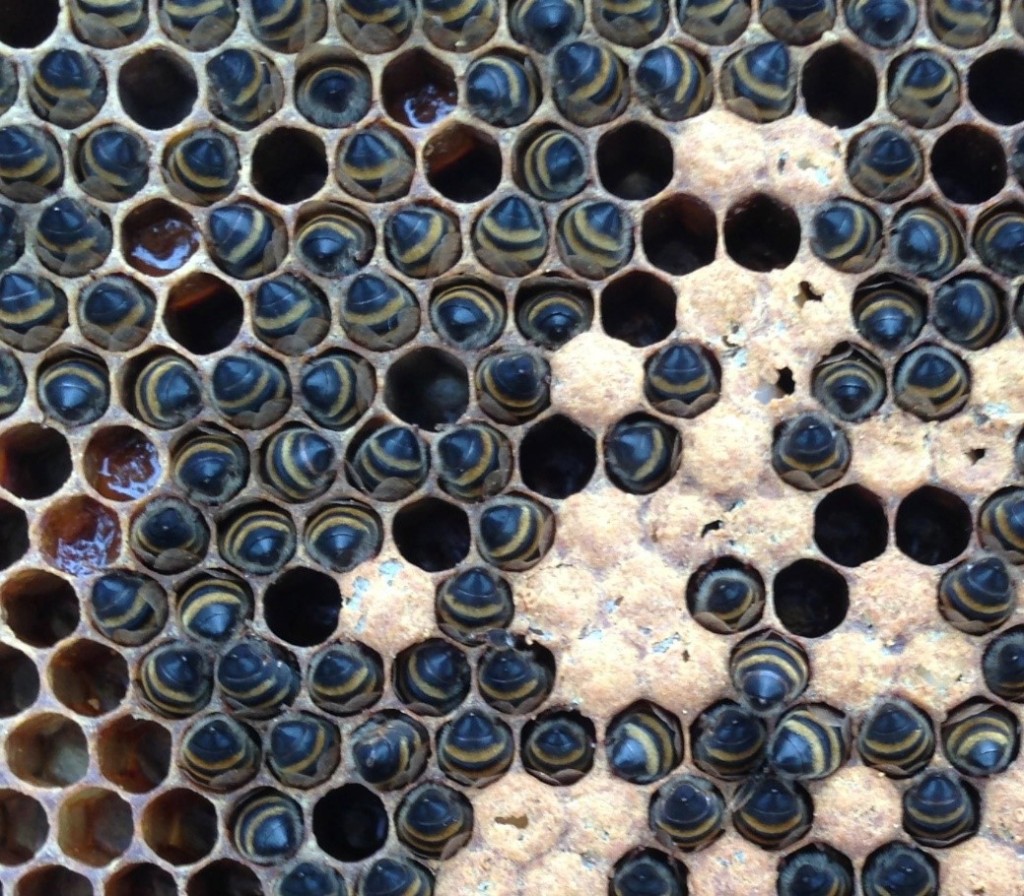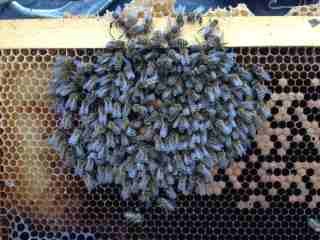It is finally looking like spring at my old Kentucky home, bees are flying, a lot of blooming underway, bees are bringing in nectar and pollen, and I am putting honey supers on my hives. However, I continue to receive questions about colonies lost this past winter. Winter is rough on bees, winter colony losses occur in hives in nature (trees), as well as in managed colonies. Our role as honey bee shepherds, or beekeepers, is to help our bees survive better than in nature.
Below are a couple of photos of what beekeepers often see when opening colonies that have died out in winter. The first (below) shows dead bees with their head down in the cells.
Dead bees in that position indicate starvation, even though there was stored honey elsewhere in the hive. The other is a very small, baseball sized cluster of dead bees.
I’m certain that the low population contributed to the colony’s final demise. It is not unusual to see clusters of starved bees, in the winter or early spring, inches from honey.
When I speak to beekeepers about helping our bees get ready for winter, I talk about three major issues: 1 – numbers of bees, 2- food stores, and 3 – colony health. Continue reading





 All photos in this post by Mary Parnell Carney
All photos in this post by Mary Parnell Carney